Traveling by trailer has become one of the most popular ways to explore the great outdoors, offering flexibility and comfort. However, the discomfort of a wobbling travel trailer can quickly dampen your spirit, turning an idyllic camping experience into a shaky nightmare. In this comprehensive guide, we’ll cover everything you need to know about stabilizing your travel trailer, from the best products on the market to practical tips and personal insights from my adventures on the road.
Understanding Trailer Stabilization
Before diving into the best methods and products for stabilizing your travel trailer, it’s essential to understand what stabilization means in this context. Stabilizing a travel trailer involves reducing unwanted movement during setup and while parked. This not only enhances comfort but also ensures safety and protects the structural integrity of your trailer.
Common Issues Caused by Insufficient Stabilization
- Uneven Weight Distribution: Leads to swaying and bouncing that can make your trailer difficult to control.
- Ground Slope: Parking on uneven ground can cause significant instability, making it essential to level your trailer.
- Wind and Weather: Exposure to strong winds can worsen the instability of an unprotected trailer.
Popular Stabilization Techniques

1. Use of Stabilizing Jacks
Stabilizing jacks are an essential component of any travel trailer setup. These jacks are designed to absorb movement and keep your trailer stable. There are various types:
- Scissor Jacks: Manually operated, they provide excellent support but require physical effort.
- Electric Jacks: Powered by electricity, allowing for easier adjustment but may require access to a power source.
- Hydraulic Jacks: These offer a higher level of stability and ease of use but come at a greater price point.

2. Wheel Chocks
Using wheel chocks is crucial to prevent your trailer from rolling, especially on an incline. They add an extra layer of security that complements your stabilizing jacks.
3. Anti-Sway Bars
These bars help distribute weight evenly and reduce swaying while driving. If you’ve ever encountered a windy stretch of road, you know how beneficial these can be!
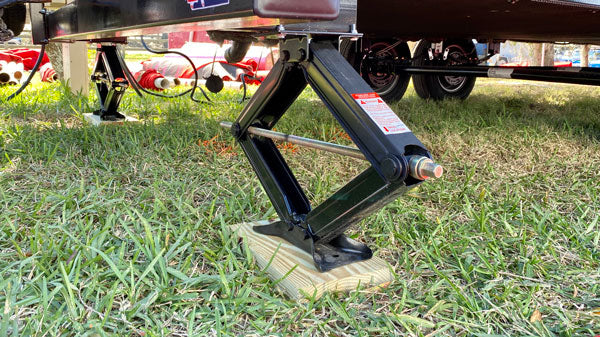
Products to Consider for Stabilizing Your Travel Trailer
Below you’ll find a comparison of some of the top-rated stabilization products available in the market. These ratings are based on user reviews from trusted eCommerce websites.
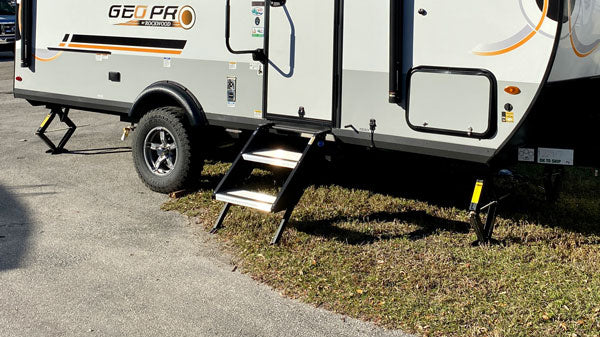
| Product | Type | Rating | Price | Best For |
|---|---|---|---|---|
| Camco 44580 Ultra-Stable Trailer Jack | Scissor Jack | 4.7/5 | $49.99 | Budget-friendly stability |
| Andersen Hitches 3350 Weight Distribution Hitch | Anti-Sway | 4.8/5 | $399.99 | Enhanced towing stability |
| Lippert 285318 Power Stabilizer Jack | Electric Jack | 4.5/5 | $199.99 | Convenience and ease of use |
| Bully Dog 40-01202 Stabilizer | Hydraulic Jack | 4.6/5 | $249.99 | High stability for large trailers |
Personal Experiences: Trailer Stabilization on the Road
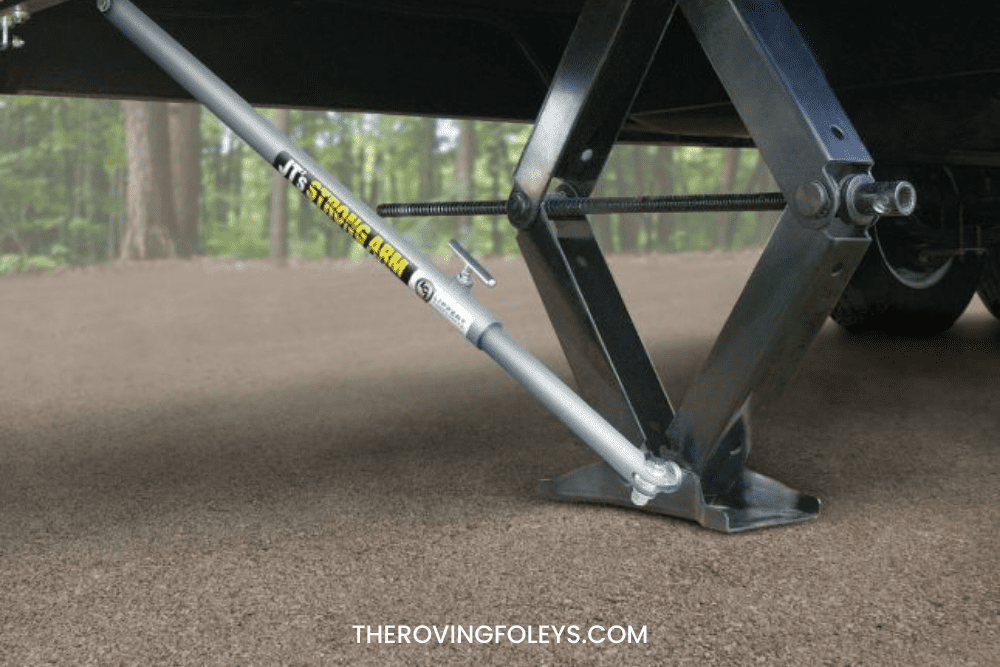
During my recent trip through the beautiful Pacific Northwest, I encountered varying terrains, from rocky cliffs to coastal campsites. Stabilizing my travel trailer became a top priority, especially when we parked near the ocean. I used a combination of scissor jacks and wheel chocks to ensure that the trailer remained level, which made a significant difference during those windy nights. I also invested in a reliable anti-sway bar after experiencing some unsettling swaying while driving through mountainous areas.
Step-by-Step Guide to Stabilizing Your Travel Trailer
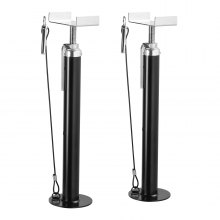
Step 1: Choose Your Parking Spot Wisely
Look for a flat and level surface when possible. If you have to park on an incline, adjust your leveling blocks appropriately.
Step 2: Level Your Trailer
Use leveling blocks under the tires if your trailer is not aligned perfectly. This step is vital for proper stabilization.
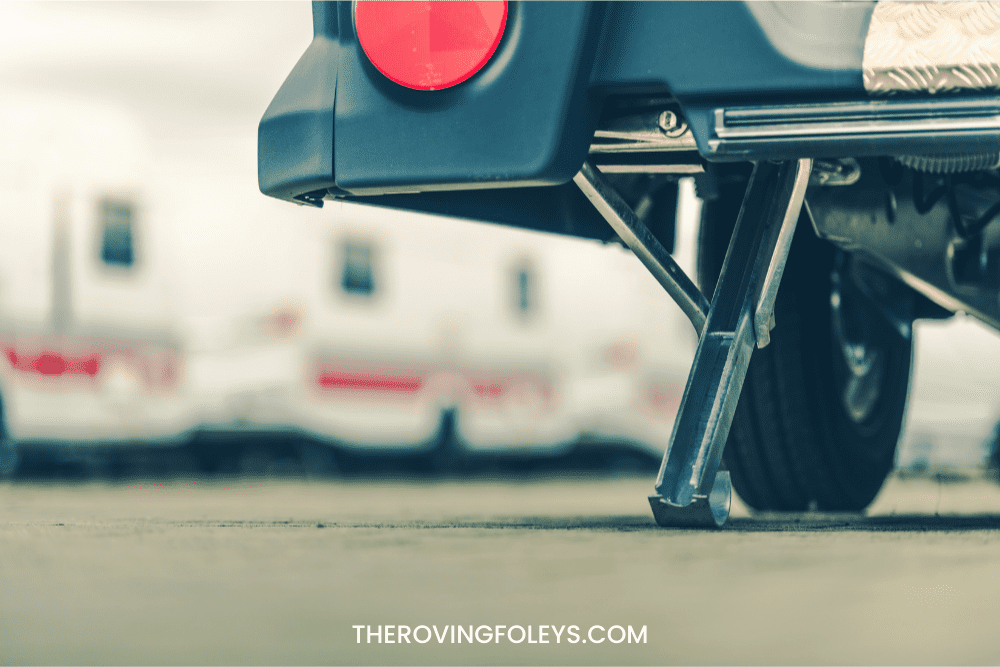
Step 3: Set Up Your Stabilizing Jacks
Deploy your stabilizing jacks according to the manufacturer’s instructions. Ensure they are securely in place before you add weight inside the trailer.
Step 4: Install Wheel Chocks
Place wheel chocks in front of and behind your trailer tires to prevent rolling.
Step 5: Final Checks
After stabilizing, enter the trailer and move around to test for any wobble. Make adjustments if necessary.
Travel Tips for Enhancing Your Trailer Experience
- Regular Maintenance: Check your stabilization equipment regularly for any signs of wear and tear.
- Practice Makes Perfect: Familiarize yourself with your stabilization setup at home before your trip.
- Weather Awareness: Pay attention to weather forecasts, especially windy conditions that may affect stability.
- Document Your Journey: Keeping a travel journal can help track what works best for each location and setup.
Pros and Cons of Stabilizing Your Travel Trailer
Pros
- Enhanced comfort during your stay.
- Increased safety and control while driving.
- Protection for the trailer’s structural integrity.
Cons
- Initial setup can take some time.
- Some stabilization products can be costly.
- Requires ongoing maintenance and checks.
Destination Highlights: Top Spots for Trailer Travelers
Here are a few beautiful destinations that every travel trailer enthusiast should consider:
1. Yellowstone National Park
A haven for wildlife and natural wonders, Yellowstone offers numerous campgrounds equipped for trailers. Just remember to stabilize well with those stunning valleys and wind gusts.
2. Grand Canyon National Park
The viewpoints are breathtaking, but it’s essential to stabilize effectively while parked. The sites at Mather Campground are tailored for trailers.
3. Acadia National Park
Known for its rugged coastline and scenic vistas, Acadia boasts plenty of trailer-friendly spots like Blackwoods Campground.
FAQs about Stabilizing Your Travel Trailer
What are the best stabilizing products for a travel trailer?
Some popular options include scissor jacks, electric jacks, wheel chocks, and anti-sway bars. Products like the Camco Ultra-Stable Trailer Jack and Andersen Hitches Weight Distribution Hitch come highly recommended.
How do I know if my travel trailer is stable?
A stable travel trailer should not sway or bounce excessively when you walk inside. Make adjustments to your stabilizing gear if you notice any unwanted movement.
Can I stabilize my travel trailer without jacks?
While jacks significantly enhance stability, wheel chocks alone can provide a degree of security. However, for optimal comfort, using jacks is recommended.
Is it difficult to set up stabilizing equipment?
With practice, setting up stabilizing equipment becomes second nature. Follow manufacturer instructions and don’t hesitate to practice at home before hitting the road.
Conclusion: Your Journey Awaits!
Stabilizing your travel trailer is essential for a comfortable and safe camping experience. By using the right equipment and following best practices, you’ll find that the beauty of the outdoors can be fully appreciated without the distraction of an unstable trailer. Happy travels, and may your adventures be filled with joy and wonder!